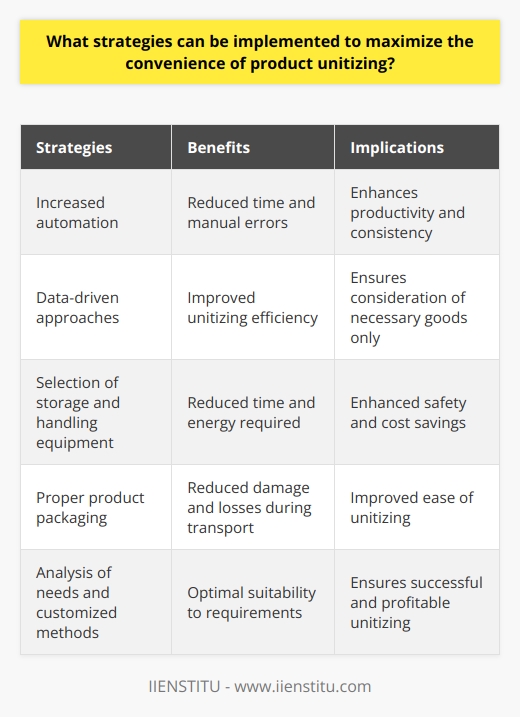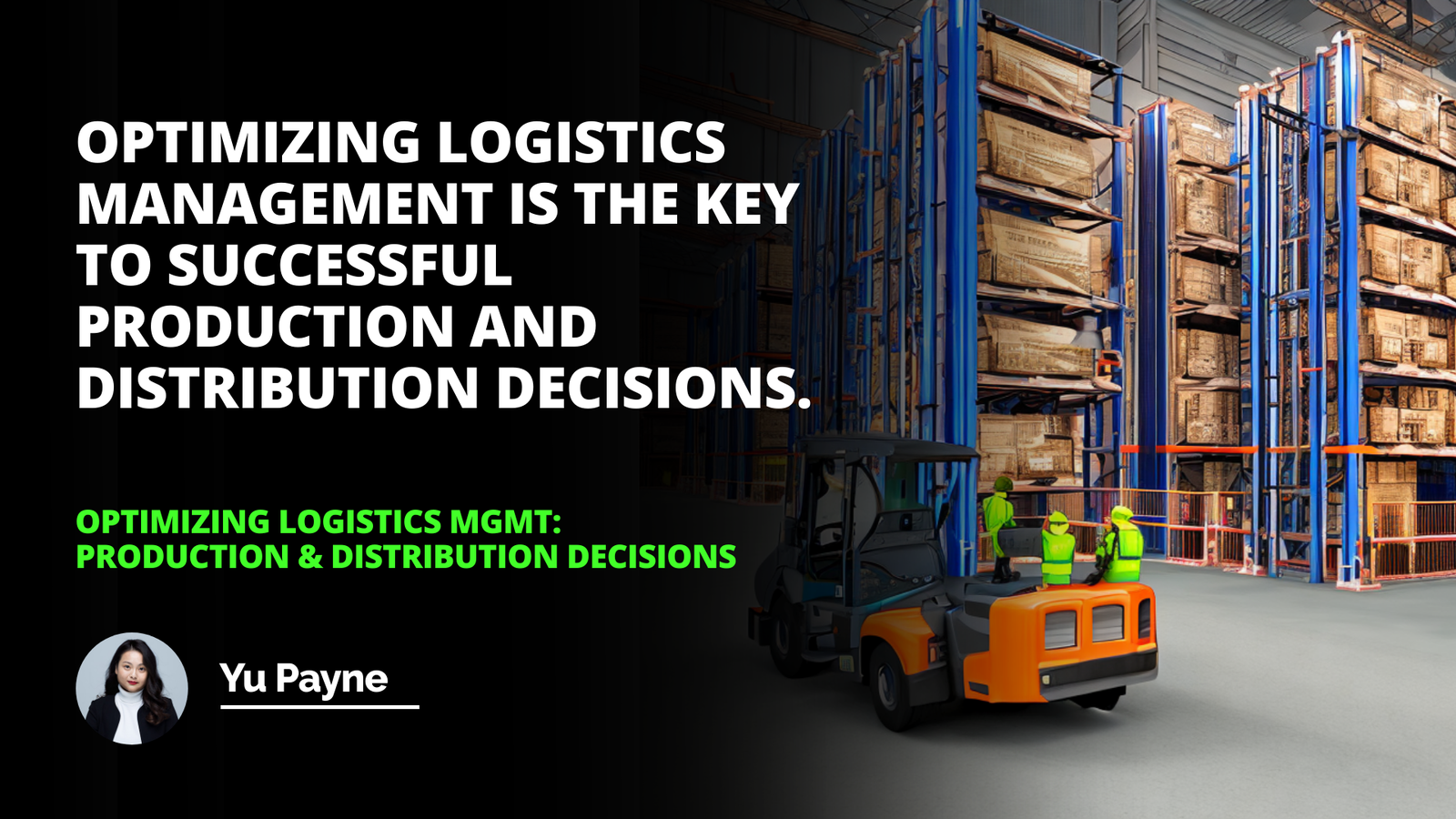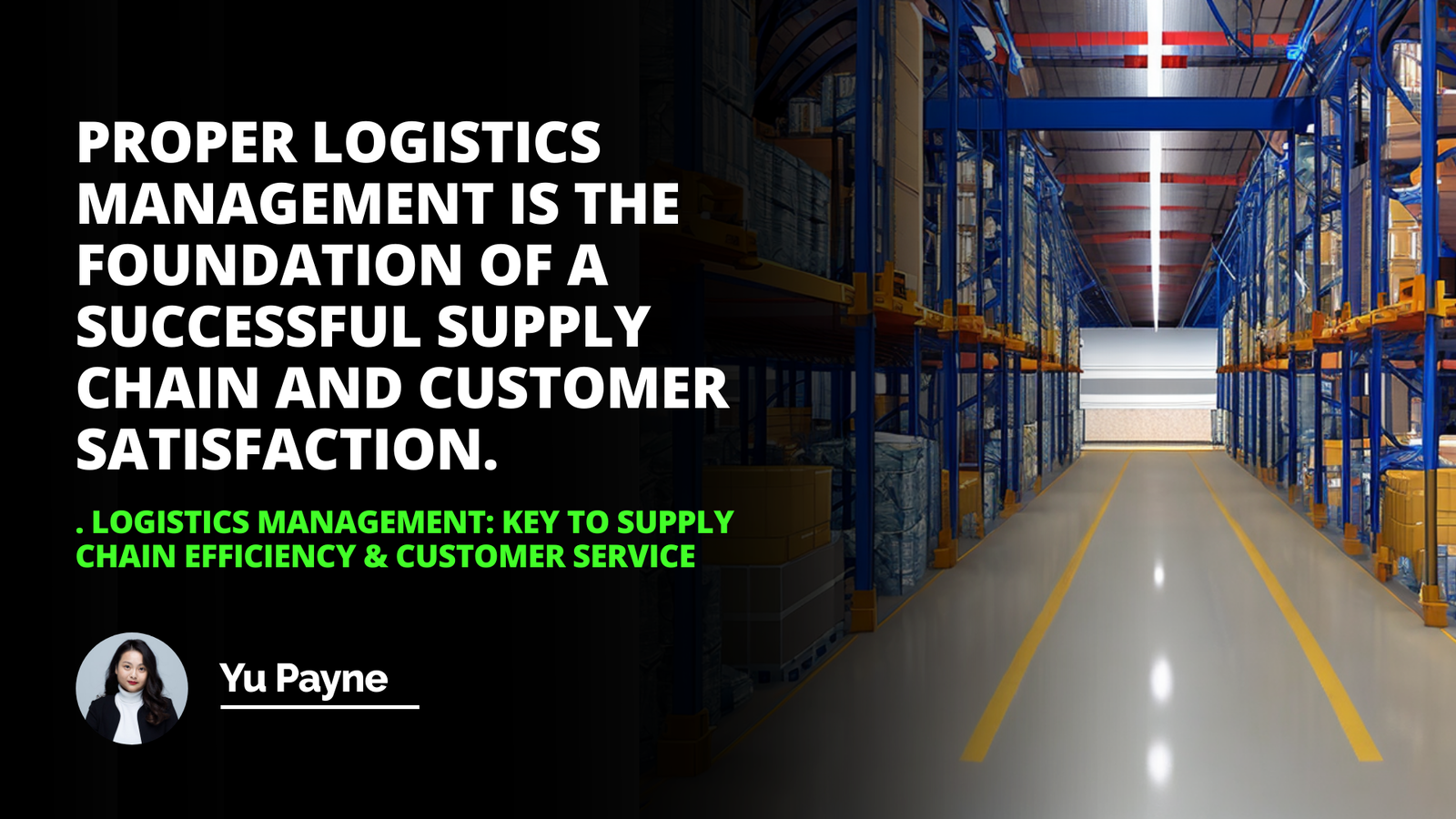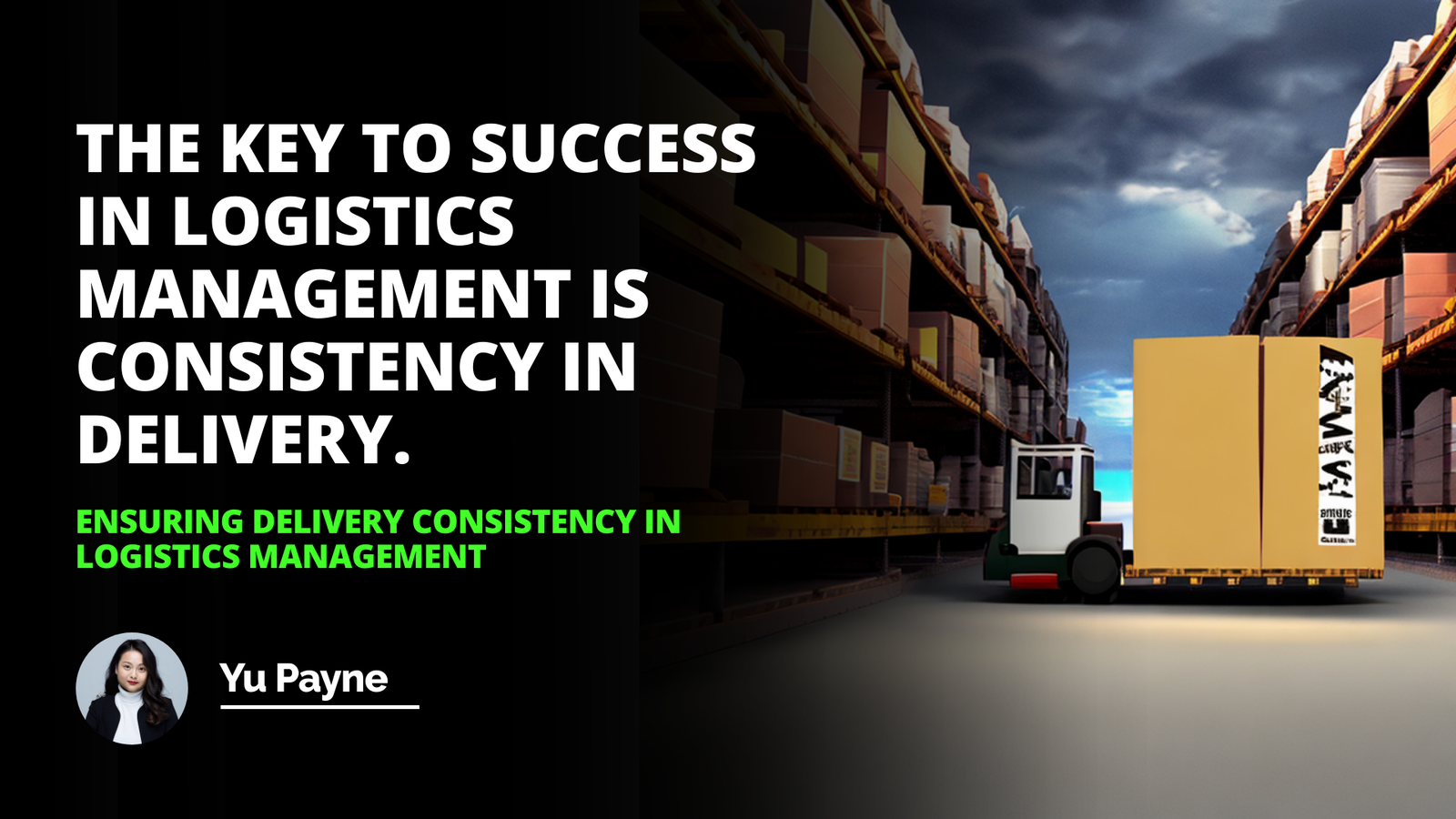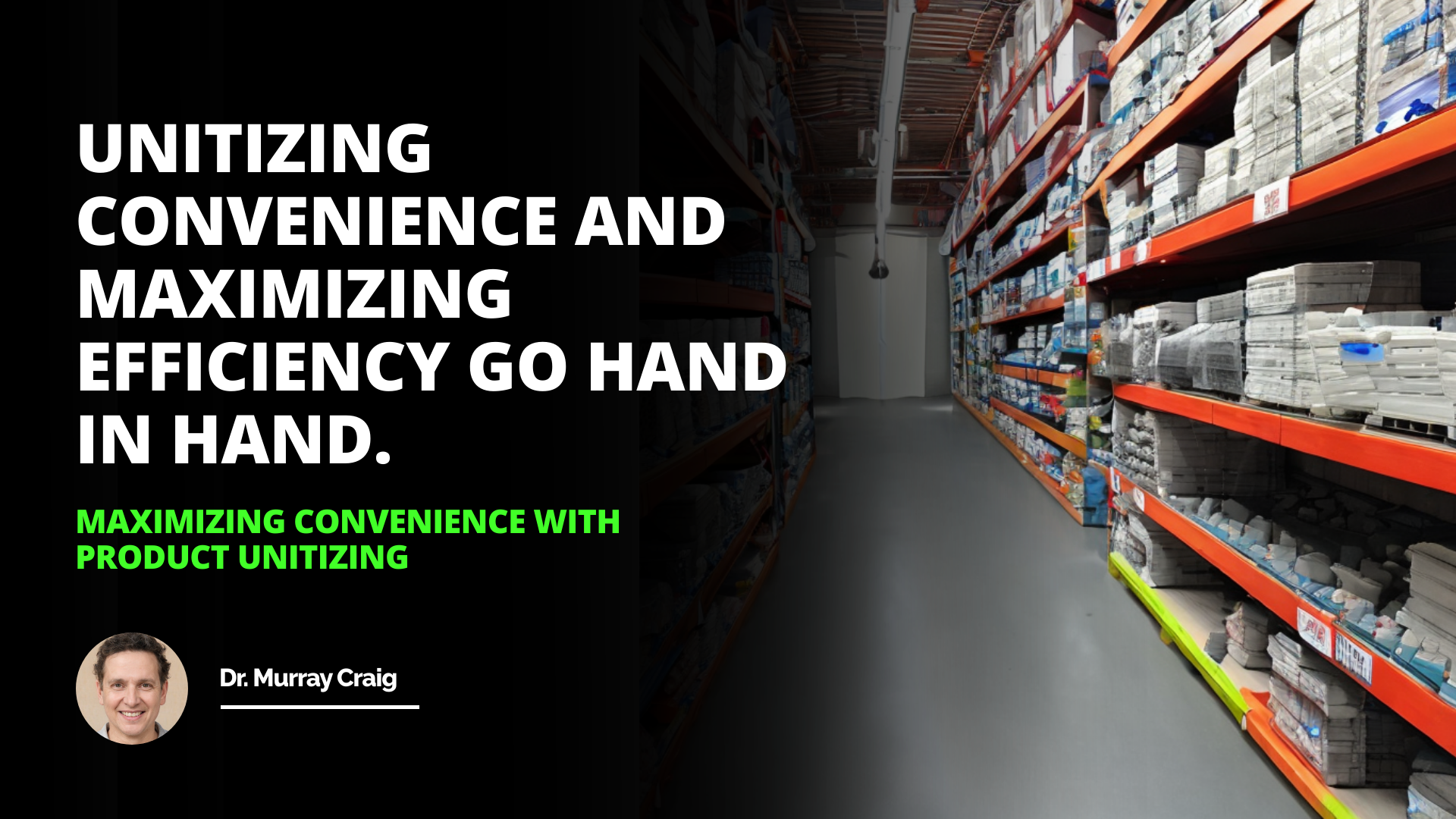
I still remember the first time I walked into my family's small warehouse as a kid. The towering stacks of boxes seemed endless, and the hum of forklifts filled the air. My parents ran a modest distribution business, and every summer, I'd help out with packing and organizing products. Back then, I didn't realize that the way we organized those products—how we divided and packaged them—was a crucial aspect of unitizing. Over the years, I've come to appreciate how product unitizing isn't just about stacking boxes neatly; it's about creating a seamless flow in the supply chain that benefits both businesses and customers alike.
Exploring Different Approaches to Unitizing
Identifying Key Considerations for Unitizing
Strategies for Unitizing within a Warehouse
The Essence of Product Unitizing
At its core, product unitizing is the process of dividing bulk shipments into smaller, manageable units for packing, delivery, and storage. It's like breaking down a massive iceberg into smaller ice cubes that fit perfectly into your glass. This practice has gained significant traction among grocery stores, companies, and various businesses aiming to enhance convenience and efficiency in product sale and distribution.
İmpact Of Autonomous Delivery Systems On Supply Chain Efficiency
Comprehensive Definition Of Logistics And İts Role İn Business
Why Unitizing Matters
Imagine walking into a store wanting just a couple of cans of soda, but you're forced to buy an entire case of 30. Frustrating, right? Unitizing allows customers to purchase products in the exact quantities they need. Whether it's a box of 30 cans or three packs of 10, customers appreciate the flexibility. This approach not only maximizes customer satisfaction but also reduces the hassle of dealing with excess packaging or storing unwanted quantities.
Exploring Different Approaches to Unitizing
Over the years, businesses have adopted various strategies to optimize their unitizing processes. Let's delve into some of these approaches and see how they can transform operations.
1. Unitizing for Space Efficiency
Space is often at a premium in warehouses and retail spaces. By dividing large bulk shipments into smaller boxes or cartons, businesses can create a smaller footprint for storage. I recall a time when my family's warehouse was cluttered with oversized pallets that took up unnecessary space. Once we started unitizing for space efficiency, we could store more diverse products without needing to expand our facility.
Benefits:
Optimized storage space
Easier inventory management
Reduced clutter and improved safety
2. Unitizing for Cost-Effectiveness
Transporting large, bulky items can be costly. By dividing products into smaller units, businesses can save on transport and labor costs. Smaller units are easier to handle, require less manpower, and can often be shipped more economically.
Advantages:
1- Reduced shipping costs
2- Lower labor expenses
3- Improved handling efficiency
3. Unitizing for Flexibility
In today's fast-paced market, demand can fluctuate rapidly. Creating multiple units of the same product allows businesses to adjust quickly to changes in customer demand or seasonal trends.
Key Strategies and Principles for Effective Logistics Management
Uncovering Strength in Decision Making Using Sensitivity Analysis
Strategies and Importance of Effective Carrier Rate Negotiation
Key Points:
Adaptability to market changes
Ability to offer promotional packages
Enhanced customer choice
Identifying Key Considerations for Unitizing
Successful unitizing isn't just about dividing products randomly. There are critical elements that businesses need to consider to make the process efficient and effective.
Establishing Clear Goals
Before diving into unitizing, it's essential to define what you aim to achieve. Is the goal to save space, reduce costs, enhance customer satisfaction, or a combination of these?
Unitizing convenience and maximizing efficiency go hand in hand.
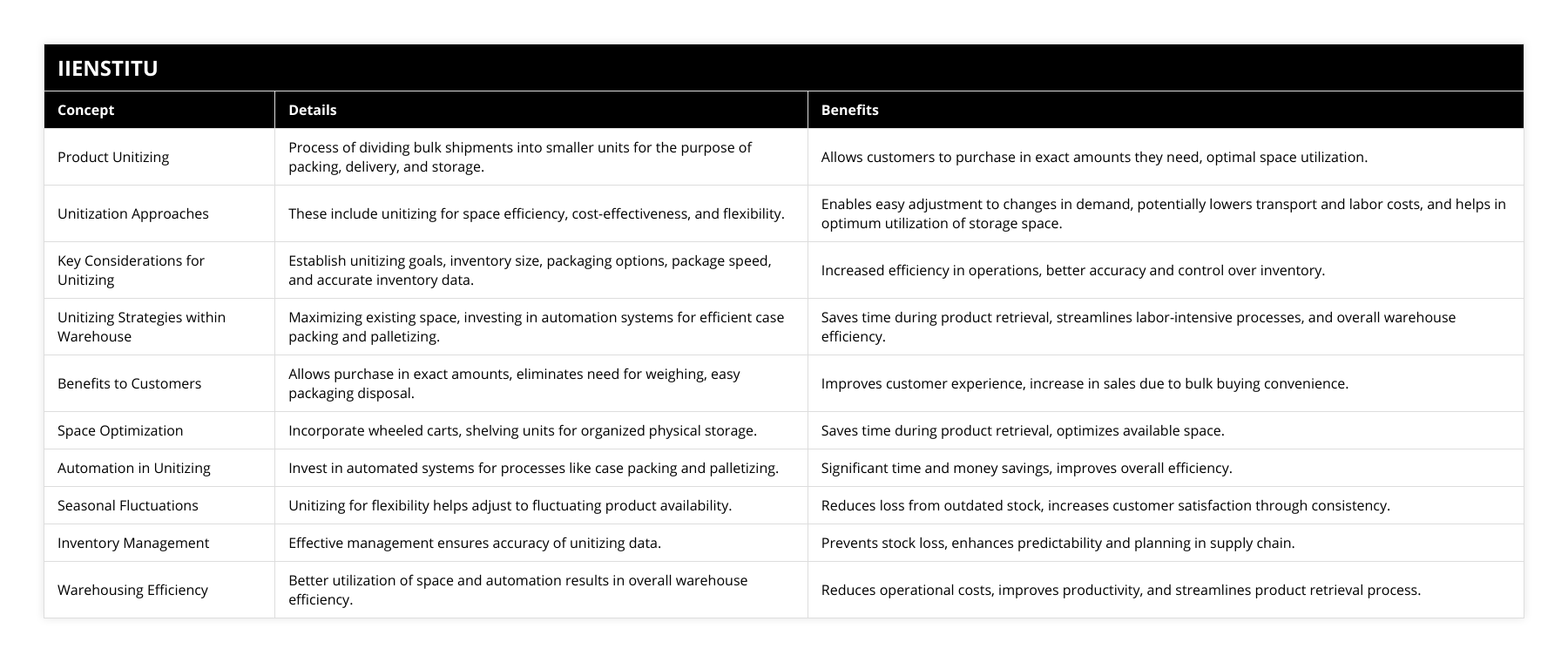
Questions to Consider:
1- What are our primary objectives with unitizing?
2- How will unitizing impact our overall supply chain?
3- Are there specific customer needs we're addressing?
Determining Inventory Size and Packaging Options
Choosing the right inventory size and packaging is pivotal. Businesses need to find a balance between offering variety and maintaining manageable stock levels.
Considerations:
Product dimensions and weight
Durability of packaging materials
Environmental impact of packaging
Efficient Separation for Individual Customers
Customers appreciate convenience. Ensuring products can be easily separated and packaged for individual customers enhances the shopping experience.
Tips:
Use perforated packaging for easy separation
Provide clear labeling for different units
Consider bundle options for popular combinations
Accurate Inventory Management
Maintaining precise unitizing data is crucial. Inaccurate data can lead to overstocking, stockouts, or logistical nightmares.
Best Practices:
1- Implement inventory management software
2- Regularly audit stock levels
3- Train staff on proper tracking procedures
Strategies for Unitizing Within a Warehouse
Optimizing unitizing processes within the warehouse can lead to significant efficiency gains. Here are some strategies that have proven effective.
Making the Most of Existing Space
Space optimization is key. Incorporating wheeled carts, shelving units, and racks can help in organizing physical storage and saving time during product retrieval.
Implementation Steps:
Assess current warehouse layout
Identify underutilized areas
Invest in adjustable shelving systems
Investing in Automation
Automation can revolutionize unitizing processes. Technologies like robotic palletizers and automated sorting systems streamline labor-intensive tasks, reducing errors and increasing speed.
Benefits of Automation:
1- Consistent packaging quality
2- Lower long-term operational costs
3- Enhanced worker safety
Training and Workforce Development
Even with the best systems in place, a well-trained workforce is indispensable. Investing in staff training ensures that everyone understands the unitizing processes and their importance.
Training Focus Areas:
Proper handling techniques
Inventory management systems
Safety protocols
Leveraging Technology for Inventory Accuracy
Modern inventory systems can track products in real-time. Using barcodes or RFID tags, businesses can maintain accurate inventory levels and reduce discrepancies.
Technological Tools:
1- Barcode scanning systems
2- RFID tracking
3- Inventory management software
Real-Life Examples of Effective Unitizing
To illustrate the impact of effective unitizing, let's look at some real-life examples.
Case Study: Grocery Store Chain Enhances Customer Satisfaction
A regional grocery store noticed that customers were reluctant to buy bulk cereal boxes. By unitizing the cereal into smaller, family-sized packs, they increased sales and improved customer satisfaction. Shoppers appreciated the ability to purchase just what they needed without excess waste.
Case Study: Manufacturing Company Reduces Costs
A manufacturing firm dealing with metal parts faced high transportation costs due to bulky shipments. By unitizing their products into stackable crates, they optimized space in transport vehicles, leading to a 15% reduction in shipping costs.
The Role of Unitizing in Supply Chain Optimization
Product unitizing isn't an isolated process; it's a critical component of the broader supply chain. Effective unitizing can streamline operations, reduce costs, and enhance customer satisfaction—all key elements in supply chain optimization.
Integrating Unitizing with Supply Chain Strategies
Businesses seeking to optimize supply chain management process tips should consider how unitizing fits into their overall strategy.
Strategies Include:
Aligning unitizing methods with supply chain goals
Collaborating with suppliers on packaging standards
Continuously reviewing and improving unitizing processes
Conclusion
Looking back at my time in my family's warehouse, I realize how the simple act of organizing and dividing products can have a profound impact on a business. Product unitizing is more than just a logistical task; it's a strategic approach that can drive efficiency, reduce costs, and enhance customer satisfaction.
By exploring different approaches to unitizing, identifying key considerations, and implementing effective strategies within the warehouse, businesses can unlock new opportunities for growth. Whether it's through space optimization, automation, or flexible packaging options, unitizing plays a pivotal role in staying competitive in today's market.
After all, in a world where convenience is king, and efficiency is paramount, unitizing convenience and maximizing efficiency truly go hand in hand.
References
Chase, R. B., Jacobs, F. R., & Aquilano, N. J. (2013). Operations Management for Competitive Advantage. McGraw-Hill/Irwin.
Bowersox, D. J., Closs, D. J., & Cooper, M. B. (2010). Supply Chain Logistics Management. McGraw-Hill.
Christopher, M. (2016). Logistics & Supply Chain Management. Pearson UK.
Tompkins, J. A., & Smith, J. D. (1998). The Warehouse Management Handbook. Tompkins Press.
Rushton, A., Croucher, P., & Baker, P. (2014). The Handbook of Logistics and Distribution Management. Kogan Page Publishers.
Note: The strategies and examples mentioned are drawn from industry practices and academic resources to provide practical insights.
Frequently Asked Questions
What are the benefits of unitizing a product in the supply chain?
Unitizing, which involves consolidating multiple items into one unit, is employed in the supply chain to help facilitate efficient transport and delivery. This practice has a myriad of benefits that organizations can take advantage of, including:
Enhanced Efficiency in Transportation: Using unit load systems aids supply chain operators in reducing their transportation costs since more items can be packed into a single shipment. Additionally, unitizing is also beneficial for identification as it makes it easier for organizations to ensure that the right product is going to the correct destination at the right time.
Improved Inventory Management: Unitizing reduces complexity in inventory management by combining multiple items into one unit. This allows organizations to make more effective decisions on inventory levels, enabling them to reduce their costs while also improving customer service.
Increased Safety: Thanks to unitizing, items are firmly secured, and packaging materials are reduced. This helps increase worker safety on the loading dock and in the warehouse. Additionally, unitized goods are less likely to be damaged in transit, helping to improve customer satisfaction.
Decreased Risk of Quality Deterioration: Unitizing is especially beneficial for perishables or goods sensitive to temperature fluctuations. It helps keep goods at a consistent temperature and ensures that quality isn’t compromised.
Overall, unitizing goods offers organizations several advantages that can improve their efficiencies and help them cut costs. By integrating unitizing into the supply chain, businesses can save money and ensure customer satisfaction and safety.
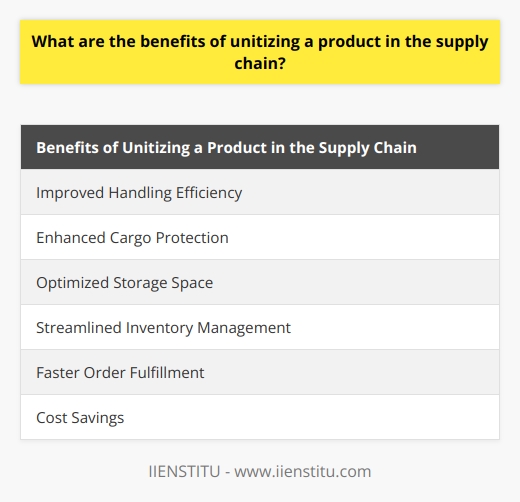
How does product unitizing increase convenience in the distribution of goods?
Product unitizing is an effective way to increase convenience in the distribution of goods. Unitizing involves bundling small items into large packs or cases, making them easier to handle, ship, and store. It also prevents the original articles from being damaged or lost. In addition, unitizing helps to reduce labor costs and to shorten the time it takes to move products from the source to the destination.
The need for efficient product unitizing increases as the online retail sector grows. A well-unitized product reduces the risk of damage or loss. It increases the speed with which goods can be moved from the warehouse to their destination. Consumers can experience the added convenience of delivering their purchases in fewer, more manageable units.
Unitizing products for distribution can also increase efficiency. Inventory costs are reduced as bulky products can be ordered in bulk and stored efficiently in fewer containers. Additionally, the ability to ship smaller, lighter packages reduces fuel costs related to transportation, improving transport efficiency and green credentials.
Product unitizing also reduces packaging costs and labor costs in the distribution of goods. By increasing the shipment size, companies can securely package fewer items, making it easier to move the goods and reducing the number of wasted materials and resources. Unitizing also lowers labor costs, as manufacturers no longer have to worry about sorting and packaging individual items, a labor-intensive process.
To summarize, product unitizing is an effective way to increase convenience in the distribution of goods. Companies can reduce labor, shipment, and packaging costs by efficiently bundling products. In addition, consumers benefit from unitizing by receiving their goods in fewer, more manageable packages and in a shorter timeframe.
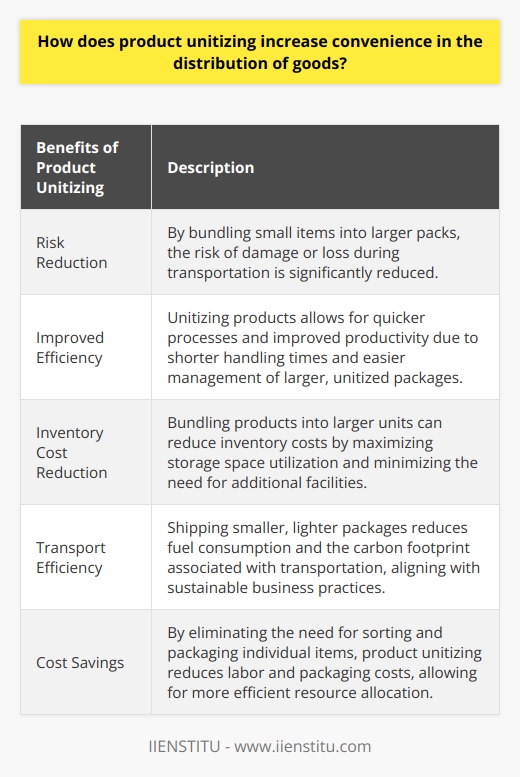
What strategies can be implemented to maximize the convenience of product unitizing?
Unitizing is a critical process in the industry, with multiple implications for the efficiency and convenience of goods. It is, therefore, essential that product unitizing be optimized to ensure successful results. This article will discuss practical strategies for maximizing the comfort of product unitizing.
First, the best strategy for maximizing the convenience of product unitizing is through increased automation. Automated processes can reduce the time needed to unitize a product, allowing more products to be unitized in less time. Automation can also reduce manual errors, thus improving accuracy and consistency. Automated systems can be integrated with existing production processes, allowing seamless transition and improved productivity.
Second, using data-driven approaches can also help maximize convenience in product unitizing. Data-driven approaches focus on leveraging existing data to inform decisions regarding unitizing, such as the choice of material, size, and quantity of goods. This data-driven approach can significantly improve the efficiency of the unitizing process and ensure that only goods needing to be unitized are considered.
Third, another strategy for maximizing the convenience of product unitizing is carefully selecting storage and handling equipment. Choosing the right equipment can significantly reduce the time and energy required to unitize goods and ensure the safety and protection of goods. Choosing equipment suitable for unitized goods can also reduce errors and save costs.
Finally, proper product packaging plays a significant role in the success of product unitizing. Packaging designed for a specific purpose can aid in the reduction of damage and losses during transport. Packaging designed to fit the goods and provide proper protection during transport can also improve the ease of unitizing.
In conclusion, many strategies are available for maximizing the convenience of product unitizing. Automation, data-driven approaches, careful storage and handling equipment selection, and proper product packaging are effective strategies for improving product unitizing efficiency, quality, and convenience. With careful analysis, companies can decide which methods best meet their needs, ensuring a successful and profitable unitizing process.
